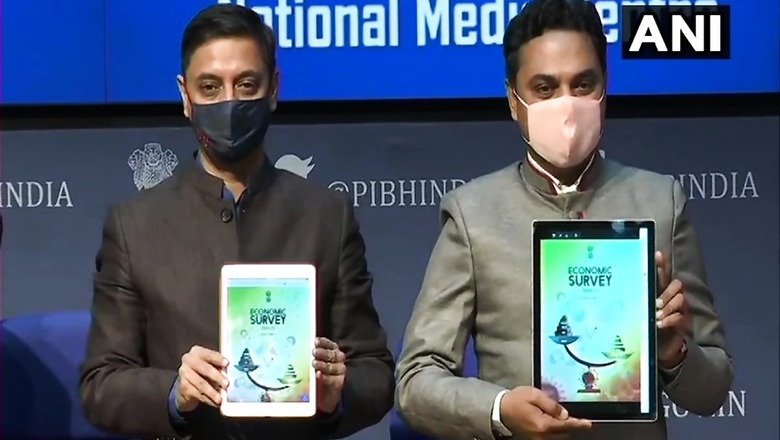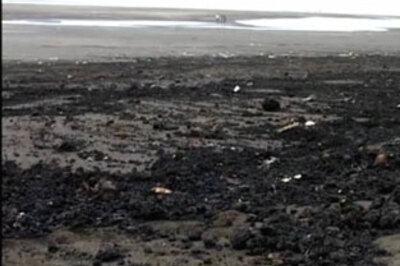
views
The Economic Survey 2020-21 tabled in the Parliament on Friday said Pradhan Mantri Jan Arogya Yojana (PM-JAY) enhanced health insurance coverage. Across all the states, it said the proportion of households with health insurance increased by 54 percent for the states that implemented PM-JAY while falling by 10 percent in states that did not.
Similarly, the proportion of households that had health insurance increased in Bihar, Assam and Sikkim from 2015-16 to 2019-20 by 89 percent. It added that this figure decreased by 12 percent in West Bengal that did not implement PM-JAY.
PM-JAY is being used for high frequency but low-cost care such as dialysis. It is a fully-funded government health insurance scheme that provides Rs 5 lakh medical insurance coverage per year for 107.4 million families identified as per the Socio-Economic Caste Census 2011.
There are health outcomes to adopting PM-JAY as well, said the survey. It explained that from 2015-16 to 2019-20, infant mortality rates declined by 20 percent for states that adopted it. For those that didn’t adopt PM-JAY, it fell by 12 percent.
The Economic Survey 2020-21 said that general medicine has been the overwhelmingly major clinical specialty used since 2018 with its share continuously growing.
It is followed by general surgery, obstetrics and gynaecology. The survey said that these three categories combine to account for more than half of the claims received on average.
“Dialysis, which is a high frequency, a low-cost procedure that is life-saving for patients with renal difficulties, accounts for a large chunk (30 percent) of the general medicine category claims under PM-JAY,” the survey added.
It also pointed out that the claims for dialysis did not diminish due to COVID-19 or because of the lockdown in March-April 2020 even though there was a steep fall in claims of other categories.
Taking into consideration the fact that dialysis claims have been growing, the survey said that the National Dialysis Mission could be merged with PM-JAY.
The Pradhan Mantri National Dialysis Programme was rolled out in 2016 as part of the National Health Mission(NHM) for provision of free dialysis services to the poor.
When it comes to general care-seeking, the survey said that the PM-JAY claims saw a V-shaped recovery after falling during the lockdown and has reached the pre-Covid-19 levels in December 2020.
The survey said the V-shaped behaviour is likely to be due to both demand and supply-side effects. On the supply side, health care workers might have cut back on services out of initial fear of infection or it is possible that pre-authorization processes were skipped.
It added that many private hospitals were not providing services for fear of infection and government hospitals were reserved for COVID-19 patients.
On the demand side, patients avoided hospitals due to fear of contracting the virus, or their access to medical services could have been impeded by lack of transport or finances during the lockdown.
The Economic Survey pointed out that the neighbouring states of West Bengal that are part of PM-JAY have performed better in health outcomes. West Bengal is not part of PM-JAY since the state withdrew from the scheme in January 2019.
The survey said that the increase in registered pregnancies for which mother received a Mother Child Protection card was marginally higher in Bihar, Assam and Sikkim at 3 percent when compared to West Bengal at 1 percent.
Similarly, three neighbouring states with PM-JAY witnessed slightly higher utilisation of maternal and child care services at 13 percent when compared to West Bengal at 11 percent, said the survey.
This increase in public healthcare utilisation for births via caesarean section has also been higher in states with PM-JAY versus that in West Bengal. Here, Bihar, Assam and Sikkim recorded a high 46 percent jump from a lower base while this increase in West Bengal was 21 percent but from a higher base.
“PM-JAY thus seems to have enabled citizens in these states to make greater use of the public healthcare infrastructure,” said the survey.
It also added that the adoption of PM-JAY in Bihar, Sikkim and Assam facilitated notable progress in health outcomes pertaining to child vaccinations and vitamin-A supplementation.
Though improvement happened in all four states, the survey said that magnitude was greater in Bihar, Sikkim and Assam. For example, the proportion of children with age 12-23 months who have received BCG vaccine increased by 1 percent in West Bengal as compared to 4 percent increase in adjoining states.
Talking about the country as a whole, the survey said that the health outcomes of the states that adopted PM-JAY improved when compared to the states that did not adopt it.
Read all the Latest News, Breaking News and Coronavirus News here



















Comments
0 comment